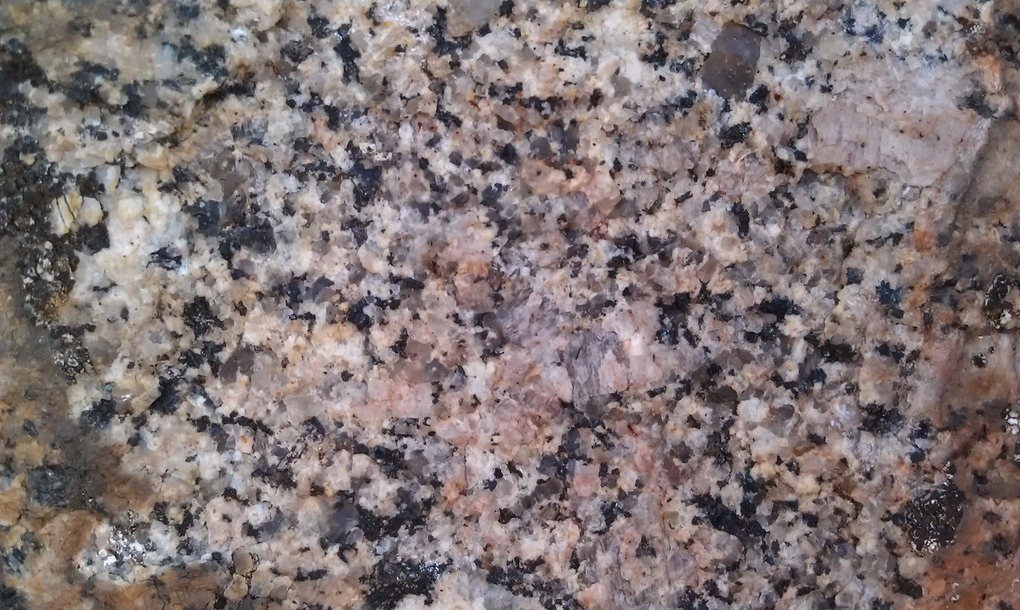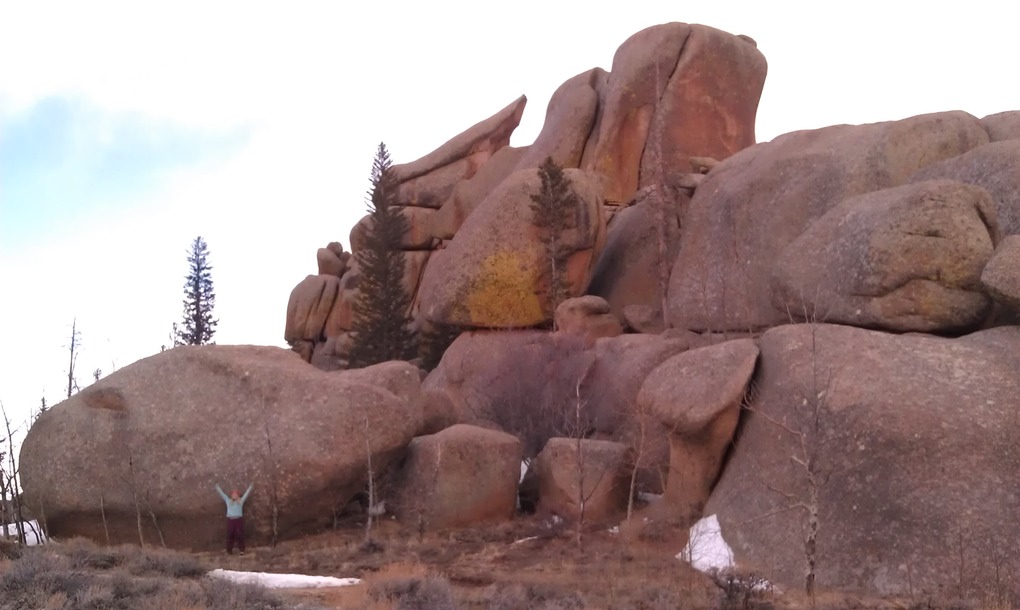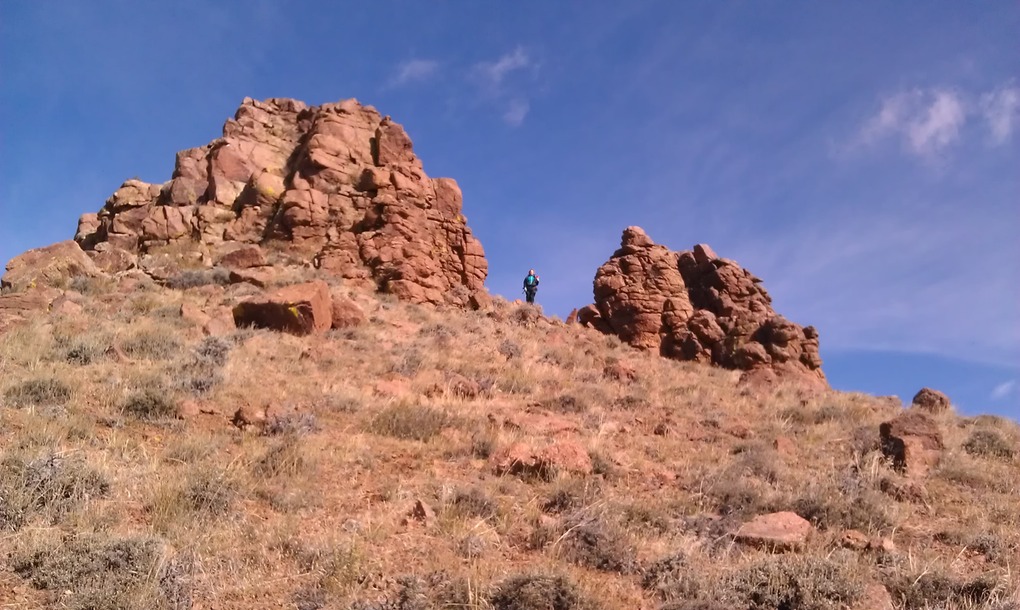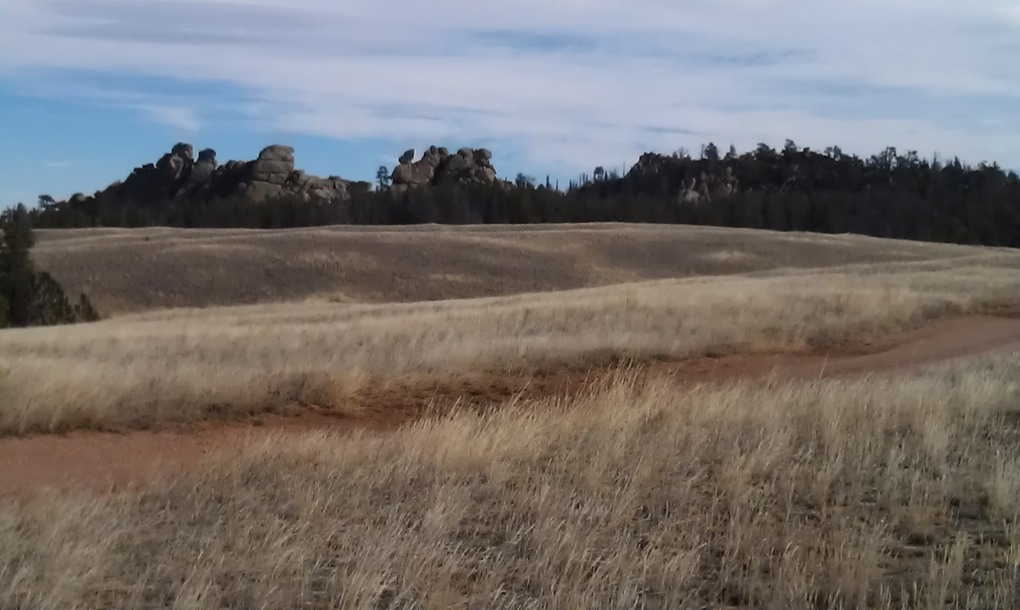My current project is focused on the Sherman Granite and the Lincoln Granite in the Sherman batholith of SE Wyoming. Found both massive and as grus, the Sherman Granite is a coarse-grained or porphyritic granite and is the primary interest of my research due to its odd weathering patterns, which are described in the next paragraph in more detail. The Sherman consists of a pink and black member. The pink member is a typical, kspar-rich granite. The black member is found more rarely and consists of mafics, mostly hornblende, and black plag. The Lincoln Granite is fine-grained and kpar-rich. I am looking at it in order to compare its weathering rate and dissolution products to the Sherman Granite. Another possible unit of interest in the area includes a porphyritic granite that is easily weatherable and found rarely in outcrop. In a few places where it is found in outcrop, it almost seems to have intruded into the Lincoln Grante.

A photo of large-grained Sherman Granite displaying its typical mineralogy, including large porphyry clasts of kspar.
The most noticeable feature of the Sherman Granite is that, when found in outcrop, the Sherman towers meters above the rest of the topography. Sitting right next to the towering structures are grus composed of weathered Sherman. In some cases, it is the Lincoln that forms towering structures next to Lincoln grus. The Sherman Granite is also cut by regular vertical and horizontal joints, which intersect at ~90 degrees in visible outcrops. This causes the weathered granite to break off in nice planar pieces. Although there have been some general hypotheses about what causes this differential weathering and these very nicely jointed outcrops, there has been no real focus on researching the rocks in order to determine the formation mechanism and weathering rates and joint-structure controls.

An outcrop of Sherman Granite at Vedauwoo around Laramie, Wy with me next to the outcrop in the bottom left corner for scale. The common jointing pattern is easily seen in the background outcrops.

Another example of the Sherman Granite structures at Long Canyon around Laramie, Wy.

A third example of the Sherman Granite towering structures at Coyote Canyon around Laramie, Wy.
My research is going to be focusing on running packed columns of black Sherman, pink Sherman, and Lincoln granite in order to collect effluent to determine what is weathering out of these rocks, when it is weathering out, and how quickly it is weathering away. Once I have my initial data on controlled weathering rates, I will be running more packed columns of each of the granite samples along with organic materials in order to determine what the effect of biological activity in the area might be on the weathering rates and if that is a control on the creation of these structures.
I will be collecting effluent from the packed columns at regular intervals. I will run the collected samples through an inductively coupled plasma mass spectrometer (ICP) in order to determine the chemical composition, and therefore mineral composition, of the weathering product. I am looking to compare the Sherman Granite to the Lincoln Granite in order to determine if the Sherman structures are caused by a mainly lithologic control or if there is something more at work controlling the weathering rates.
A photo of the first experiment of packed columns to determine flow rate. Two columns are not shown in the photo. Columns in the first experiment were packed with Sherman Granite or Lincoln Granite. Water runs up through the tube, exiting at the top, ending up in the clear collection jars seen on the bottom shelf. My experimental columns will look like this but there will be two columns of pink Sherman, two of black Sherman, and two of Lincoln.
As well, I will be looking into what causes the jointing to form in such a nice pattern, as well as determining possible formation processes for these resistent structures. Linton, 1955, proposed that the Tors of England, which are extremely similar to the Sherman structures, formed by preferential dissolution subsurface interaction of water and atmospheric CO2. Ruxton and Berry, 1956, proposed a similar weathering process as Linton. However, I would like to explore in more detail why the joints form where they do and how this could end up being such a regularly occuring pattern. It remains unclear how or why forming in the water table would end up with the jointing structure we see in the field. Currently, I will be scouring previous research in the hopes that other researchers have addressed these questions before determing if I need further experimentation to ascertain the exact formation mechanisms.
The desired products of my research will be detailed characaturizations of the Sherman and Lincoln rock units and determining the weathering and erosional rates of the granites. Large-scale, I am looking to relate this research to the feedback cycles of water, energy, and carbon in the critical zone. By better understanding weathering rates, which feed into topography, which feeds into groundwater flow, I can help to assess how increasing amounts of atmospheric carbon may effect groundwater flow. Molnar, 2003, suggested that increasing amounts of atmospheric CO2 may not effect weathering rates in all places, although Wyoming may be one place where erosional rates are increased due to climate change. I am looking to determine if this is true and at what rate it may be true.